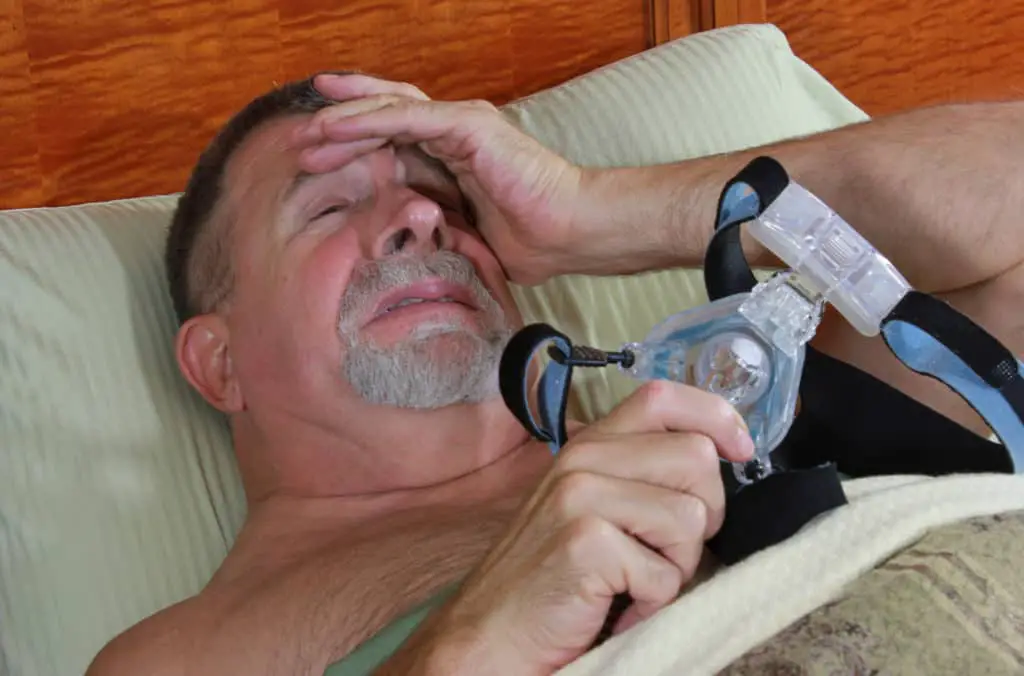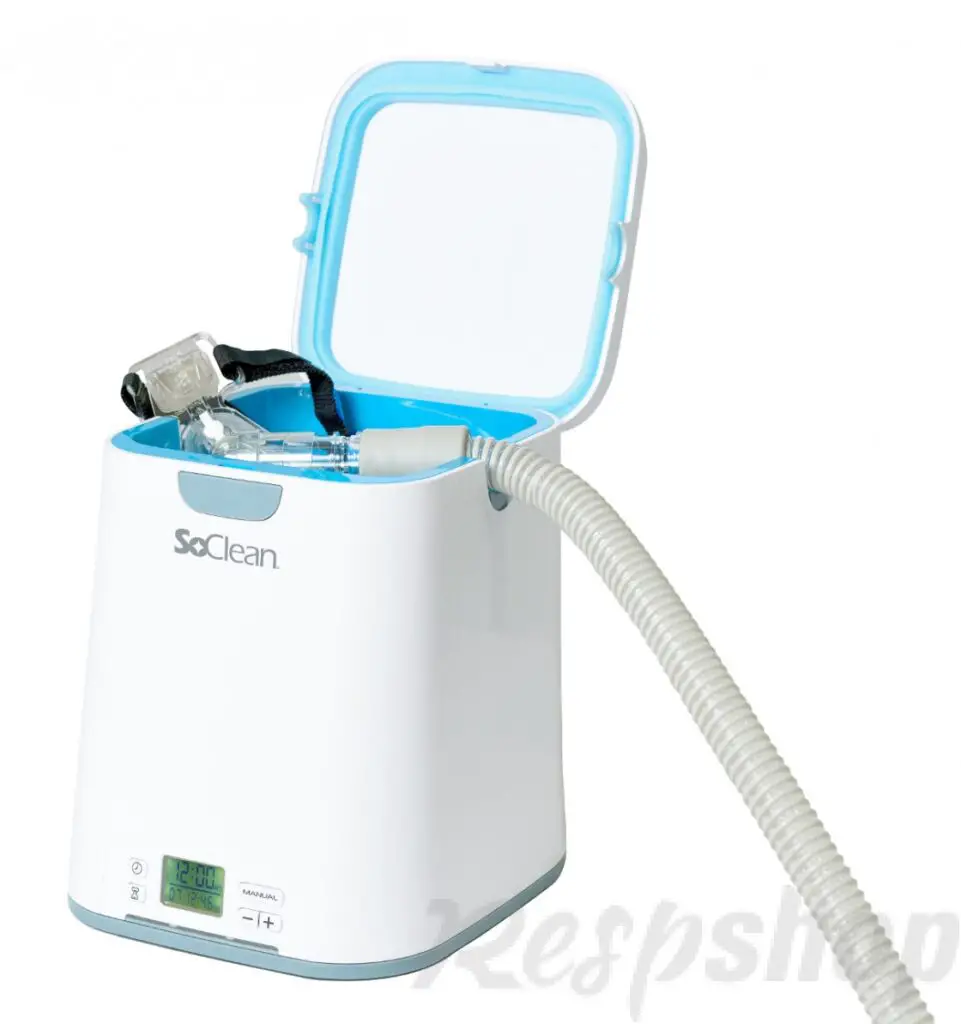Are Ozone CPAP Cleaners Safe to Use?
Did you know that obstructive sleep apnea is a widespread problem in the United States? After all, more than 18 million American adults suffer from this condition. It occurs regardless of age and gender.
A great way to ensure that your breathing passages remain open is the use of a CPAP (Continuous Positive Airway Pressure) when sleeping. Ask your doctor if a CPAP would be helpful to you.
In order to keep this important piece of equipment running efficiently, it needs to be cleaned on a regular basis. There’s a fair bit of controversy that surrounds just exactly how to clean a CPAP to keep it safe and effective for the user, and we are going to discuss those issues below.
When it comes to cleaning your CPAP equipment, you can do one of three things:
- Hand-wash it and air dry the equipment
- Use a UV-based cleaning machine
- Use an ozone-based cleaning machine
Best Products For Cleaning Your CPAP By Hand
Pros/Cons Of Using A Cleaning Machine To Clean Your CPAP
Pros:
- Saves time
- Could do a better job than you would if you’re not exactly meticulous about how you clean things
- Easy for most people to use
- Anecdotally is very effective
Cons:
- More expensive than cleaning by hand
- Not FDA-approved for this purpose at this time
- Safety issues?
Check out this video from the FDA about the Safety of CPAP Cleaning Machines
Are Ozone CPAP Cleaners Safe?
You’re likely here on this blog because you’ve heard that using ozone cleaners can potentially be unsafe for the user of the CPAP machine. In fact, the FDA specifically says on their site:
The FDA has received 11 reports from 2017-2019 from patients experiencing cough, difficult breathing, nasal irritation, headaches, asthma attacks and other breathing complaints when ozone gas-based products were used to clean, sanitize or disinfect CPAP devices and accessories.
FDA.gov
Ozone-based CPAP cleaners use activated oxygen to clean your CPAP products. This ozone can be a mucous membrane irritant and can be harmful to some who use these devices.
However, a little later on their site, they also state the following:
The FDA has not determined whether CPAP cleaning devices are safe.
There are many medical devices and medications that can be used and cause some side effects in certain people. That’s not to say that they shouldn’t be used at all. When used appropriately and according to the manufacturer’s directions, these machines can be safe.
Are 11 reports about ozone-based cleaners enough to worry the average person? That’s something you have to decide for yourself. However, that’s a pretty small sample size to have the FDA come out with a special safety bulletin.
What we don’t know about the people that reported these adverse affects are how they were using the ozone-based cleaners. Were they using the cleaners as recommended by the manufacturers? Did they allow enough airing out time before using the mask?
It’s quite possible that some people are far more susceptible to the effects of ozone and that, despite following manufacturer’s directions, they will still have problems.

Are UV-Based CPAP Cleaners Safe?
The FDA hasn’t (as of this writing) had any reports of health problems associated with UV-based cleaning machines. Ultraviolet light has been used as a cleaner in a wide variety of industries, most notably in water purification plants.
What Does All This Mean??
Let’s set some good guidelines on keeping safe with a CPAP and a CPAP cleaner:
- CPAP machines are best used to treat obstructive sleep apnea. Using them in patients with other respiratory diseases is something that only a doctor can advise you on (I am not your doctor).
- To keep yourself safe, you must follow the manufacturer’s instructions on how to use your CPAP cleaner. When used properly, these CPAP machines are designed to not expose the user to unacceptable levels of ozone.
- The most common mistake is that users don’t follow the manufacturer’s recommendations. Users should wait at least two hours before using their just-cleaned CPAP equipment.
- You shouldn’t be in the room with the machine that is cleaning using ozone.
- Running your CPAP for 10 minutes prior to use will lessen the ozone smell and help flush the unit
Effects of Improper Levels of Ozone on Health
The most common side effect of ozone on humans is irritating the mucous membranes. It’s also a known fact that ozone can affect the central nervous system in a negative manner. You’re also at risk for heart and vision problems if you inhale too much ozone.
If you have improper ozone levels in your system, you can irritate your lungs. The ultimate result is getting pulmonary edema. That’s why it’s important to wait for a while after cleaning your CPAP mask with ozone-based products.
Effects of Ozone on CPAP Equipment
A lot of experts feel that CPAP devices and masks are at risk with ozone cleaners. There are some reports of damaged silicone seals and gaskets due to the ozone. It’s also known for the chemical to corrode the electronics of CPAP devices.
In some states, there are strict standards for using ozone in households. That’s why a lot of CPAP cleaner manufacturers stopped making ozone-based cleaners. They want to avoid hidden risks with either the state or the federal regulatory boards.
What Are Alternatives to Ozone CPAP Cleaners?
A lot of people wonder if heat-based disinfectants are viable replacements for their ozone-based counterparts. But the problem is that heat alone isn’t enough to disinfect CPAP equipment. Plastics and silicone are hard to disinfect using low heat levels.
So, what are the alternatives to ozone CPAP cleaners? Here is one popular one:
The Lumin CPAP and Mask Cleaner
This is a great machine that uses Ultraviolet light instead of ozone for cleaning CPAP equipment. First released last year, it’s gotten loads of positive user reviews. Its maker says that it has the means of killing about 99% of all microbes in CPAP devices.
This device can help disinfect CPAPs within a span of five minutes. The best thing about this device is that it’s capable of disinfecting other household items as well, like:
- Cellular phones
- Kids’ toys
- Other household accessories
When opening the drawer, the light of the Lumin device turns off to protect your eyes from the UV rays. It allows you to clean your CPAP equipment at least once a week. This also enables you to disinfect it daily since the UV rays won’t leave residues.
Can’t find a Lumin? There are some smaller UV-based cleaners that can be used to clean your mask, headgear, and tubing.
Cleaning By Hand Using Soap-Based Products
This is easily the cheapest way to clean your CPAP equipment, but it does require a larger time involvement.
Read Can I Clean My CPAP Equipment In The Dishwasher for far more detailed information on how to clean your CPAP equipment by hand.
CPAP Mask Cleaning Wipes
There are cleaning wipes that can be used to clean your mask instead of using soap and water. These wipes don’t have any specific sterilization properties. They just manually remove debris such as:
- Mold
- Grease
- Oils
- Bacteria
It will eliminate other leftovers stuck inside your mask, as well as the hose or reservoir. All you need to do is to open the dispensing flap and pull out the wipe. Put the lid back on so the rest of the other wipes don’t get dry.
You can then wipe your CPAP equipment with this product. It isn’t at risk of corroding or breaking down due to chemical reactions. After all, this cleaning wipe doesn’t use latex, alcohol, or other harmful substances.
This sanitation method is like the one used in hospitals and hotels. It’s safe and natural without the need of operating complicated mechanisms.
Still Interested In An Ozone-based CPAP Cleaner?
Perhaps the above information makes you aware and cautious, but still interested in purchasing an Ozone-based CPAP cleaner for yourself? Check out the top-rated cleaners below:
What Happens if Your CPAP Isn’t Clean?
Your CPAP equipment’s tubing and humidifier systems are prone to mold, yeast, and fungus developments. The accessories help you breathe better while staying warm and comfortable. But it’s important to pay close attention when cleaning these accessories.
Dangerous molds might build up and risk your health if you use it without proper cleaning.
For More Info:
What Happens If I Don’t Clean My CPAP Machine?
CPAP Cleaning: Helpful Steps To Make Sure Your CPAP Stays Clean
In Conclusion
While the FDA hasn’t specifically approved the use of CPAP cleaners that utilize Ozone or UV light, this lack of approval does not mean that they aren’t useful. CPAP users are finding these machines effective and easy to use and this is why they are gaining popularity.
The most important part about cleaning your CPAP machine is that it’s done regularly and thoroughly. If you are finding that hand-cleaning your CPAP isn’t working, then perhaps you should try a CPAP cleaning machine and decide for yourself.


